Transportation/Communications
Bush Life- drawings by Alfred Masuzumi
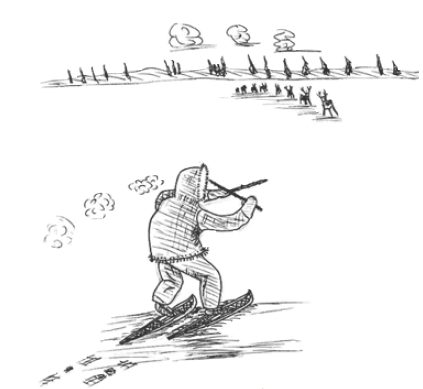
We used the traditional method to fool the caribou by rubbing two small tree ends together, to make them think that a caribou is rubbing his antlers onto a small tree, or the hoofs clicking together. - Charlie Codzi
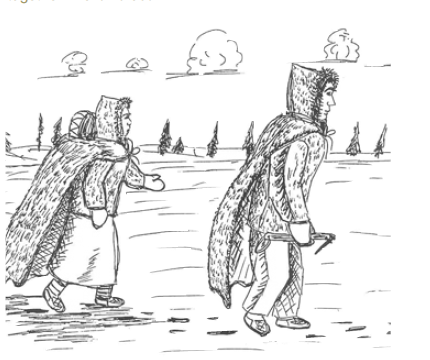
People traditionally wore caribou hide capes, which were also used for blankets. - Veronica Kochon
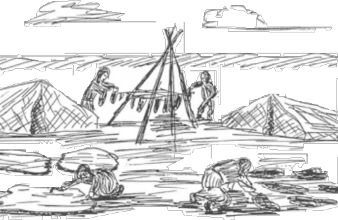
Drying meat in the sun. The hides are also laid out to be dried and cured for blankets. - Therese Codzi
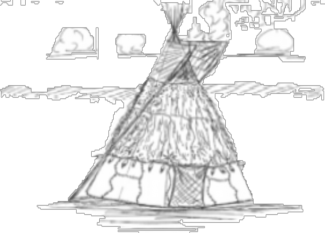
About 20 hides with no hair were used for the bottom section of the tipi. Hides with hair were used for the top. Raven feathers were used for decoration. - Therese Codzi
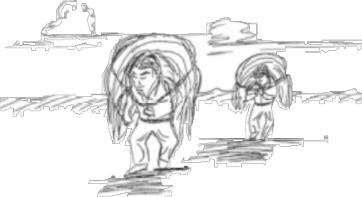
When the hunters carried the hides back to camp, sometimes they added light delicacies to their load, like the breast bone and other goodies. - Veronica Kochon
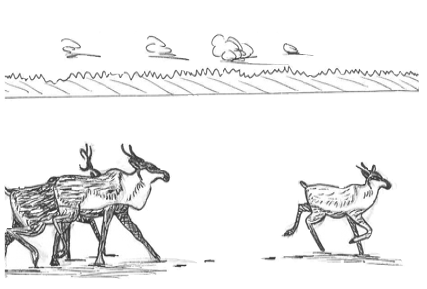
Eseloa (Belé yah) leading a herd of caribou on a lake. That little caribou was raised by a human. It has a burnt colour, reddish- brown. He didn't want his antlers to grow long, so he burned them. That's why his antlers have black tips.
There is a saying that it never leads the caribou by the shore. It leads only in the middle of the lake. It breaks trail, then circles around the herd very fast to keep it going. I saw this form myself on Loche Lake once. - Louie Boucan
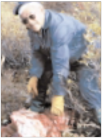
Alfred Masuzumi is an artist and writer living in Fort Good Hope. His first book, Caribou Hide, was published in 2000 by Raven Rock Publishing (Yellowknife).
Bush Life originally published in the Mackenzie Valley Viewer, 2001. Printed with permission.
[ Sahtu Atlas Table of Contents ]
[ Next Section ]



 Phone: 867-374-4040
Phone: 867-374-4040 Email:
Email: